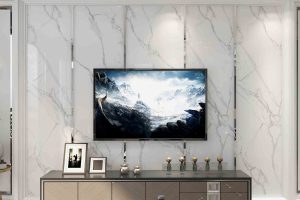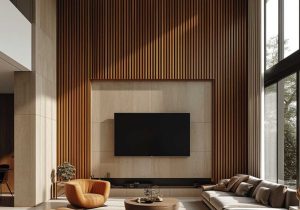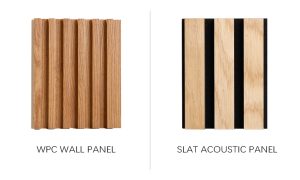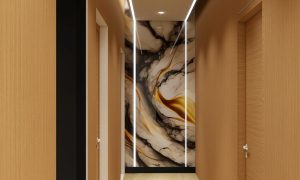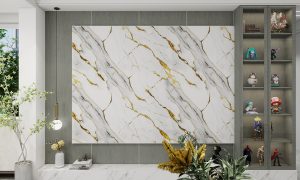
Advantages of WPC Outdoor Cladding:
- Durability:
- Resistance to Rot and Decay: Unlike traditional wood, WPC does not rot or decay when exposed to moisture, making it ideal for wet or humid environments.
- Insect Resistance: WPC is resistant to termites and other wood-boring insects, reducing the risk of damage over time.
- Low Maintenance:
- Easy Cleaning: WPC cladding requires only periodic cleaning with soap and water to remove dirt and debris.
- No Need for Painting or Staining: Unlike wood, WPC does not require regular painting, staining, or sealing to maintain its appearance.
- Aesthetic Appeal:
- Natural Wood Look: WPC mimics the appearance of natural wood, offering a warm and inviting look.
- Variety of Colors and Finishes: Available in numerous colors and textures, WPC can match various architectural styles and personal preferences.
- Weather Resistance:
- UV Resistance: Many WPC products are treated to resist UV rays, preventing significant fading or discoloration.
- Moisture Resistance: WPC does not absorb water, making it suitable for areas with high rainfall or humidity.
- Temperature Stability: Designed to withstand temperature fluctuations, WPC cladding maintains its structural integrity in both hot and cold climates.
- Environmentally Friendly:
- Recycled Materials: WPC is often made from recycled wood fibers and plastic, reducing the demand for virgin materials.
- Sustainability: Using WPC helps conserve natural forests and reduces waste in landfills.
- Ease of Installation:
- Standard Tools: WPC can be cut, drilled, and installed using standard woodworking tools.
- Quick Installation: Its consistent size and shape allow for quicker installation compared to traditional wood cladding, reducing labor costs.
Disadvantages of WPC Outdoor Cladding:
- Cost:
- Higher Initial Investment: The initial cost of WPC cladding can be higher than some other materials, such as vinyl or fiber cement. However, its long-term benefits often justify the expense.
- Color Fading:
- Exposure to Intense Sunlight: Over time, even UV-resistant WPC may experience slight fading, especially in areas with strong, direct sunlight.
- Susceptibility to Scratches:
- Surface Sensitivity: The surface of WPC cladding can scratch more easily than natural wood, so care must be taken during installation and use.
- Quality Variability:
- Manufacturing Differences: The quality of WPC products can vary based on the manufacturer. It’s essential to choose products from reputable suppliers to ensure consistency and performance.
- Limited Heat Resistance:
- Thermal Expansion and Contraction: In extremely high or low temperatures, WPC can expand or contract slightly, which may affect its installation and performance. Proper installation techniques can mitigate this issue.
- Heavier Weight:
- Weight Considerations: WPC is generally heavier than traditional wood, which can affect handling and transportation.
Conclusion:

WPC outdoor cladding offers numerous benefits, particularly in terms of durability, low maintenance, and environmental sustainability. However, it is essential to consider its higher initial cost, potential for color fading, and quality variability. By carefully selecting high-quality products and following proper installation guidelines, the advantages of WPC cladding can be maximized, making it a valuable choice for many outdoor applications.

